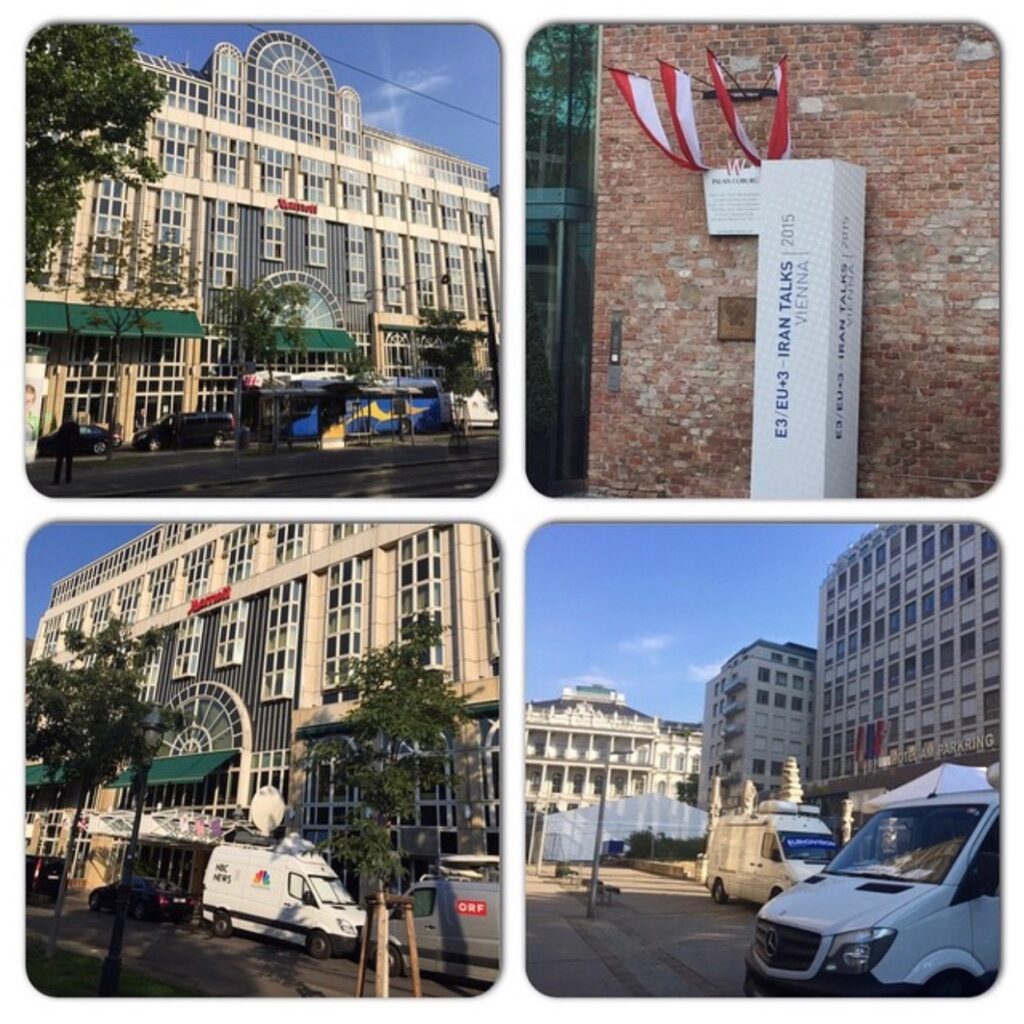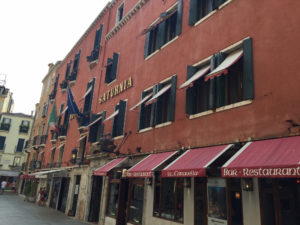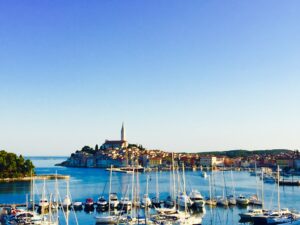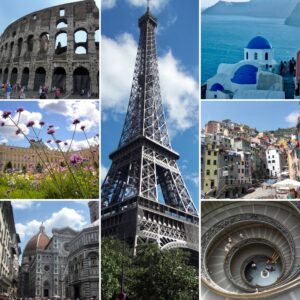Blog Post – Expanded 2015 European Trip
My family and I enjoyed our first European vacation so much, we decided to return in Summer 2015 to visit Austria, Hungary, Croatia, and Italy (a second time).
Our first stop was Vienna, the capital of Austria. It’s one of Europe’s most iconic cities, cultural, economic and political centers. We stayed at the Vienna Marriott Hotel located on the famous circular boulevard that surrounds Vienna’s historical center – the grand Ringstrasse. The hotel is close to a lot of Vienna’s best-known sights and other points of interests, including the Vienna State Opera, Museum of Fine Arts, Parliament Buildings, many fine restaurants, and Sacher Cafe (home of probably the world’s most chocolate cake – the sachertorte cake).
When we arrived at the hotel, the streets were packed with news vans from around the world. We soon discovered the US and Iran Nuclear Negotiations were taking place in the Auxiliary Parliament Building next to the hotel. Many of the Iranian delegation staffers were staying at our hotel. I saw them every evening huddled in corners of the restaurant perusing stacks of paper. From the back of the hotel I could peer through locked glass doors into the “press tent” and the front of the parliament building where I saw John Kerry, then US Secretary of State, enter and depart a couple of times. It was very interesting. I never expected to be a witness to an issue capturing headlines around the world at the time.
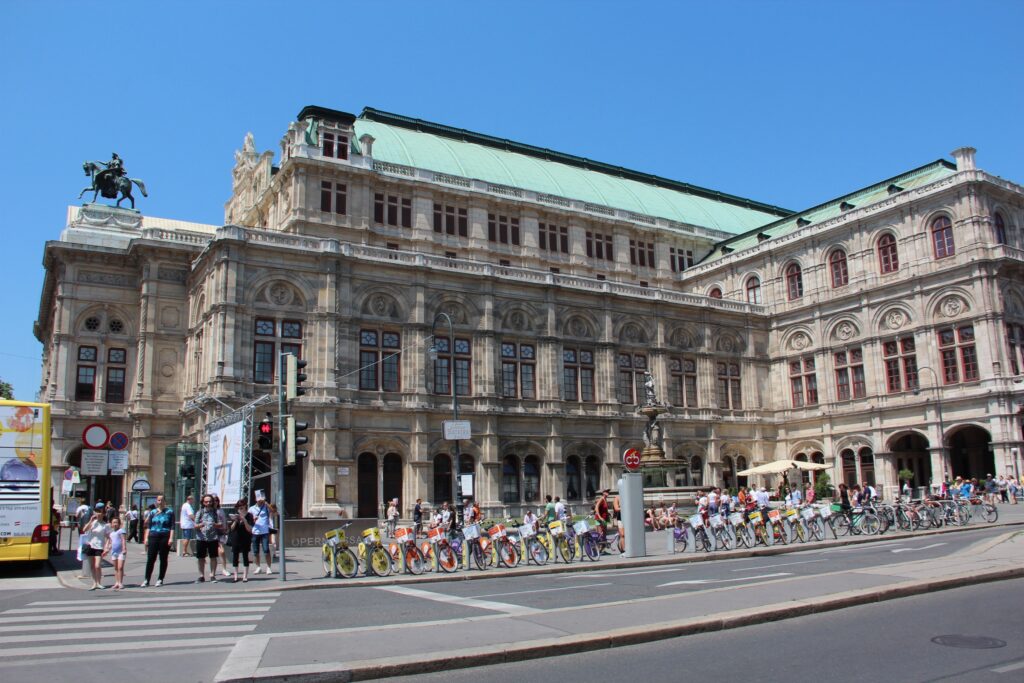
Vienna Opera House
I loved our time in Vienna. We immersed ourselves in historical and cultural tours. We attended the beautiful Vienna Opera and visited other points of interests. The walkability of the area around the hotel is safe and pleasant. We were out every night for dinner, taking-in the busy night life and amateur street entertainment. I also enjoyed my share of wiener schnitzel and sacher torte too.

Opera House 
Opera House 
Cafe Sacher, Vienna
One funny story worth telling happened our first night in Vienna. The hotel concierge recommended a popular wiener schnitzel restaurant for dinner. When it came time to pay, my husband used Euros left over from our previous trip to Europe. When he said he didn’t have enough Euros I added the coins I brought with me. My husband paid the waitress. She returned a few minutes later. I was thinking we were done, but she said, “I can’t accept your money.” My husband thought maybe he embarrassed her by leaving a generous tip. She then told us, “She had never seen the money we gave her before.” Confused, I looked at the currency and realized I had given her Mexican Pesos and not Euros. I burst out laughing. I tried explaining to the waitress what happened, but I don’t think she understood. We ended-up paying with a credit card.
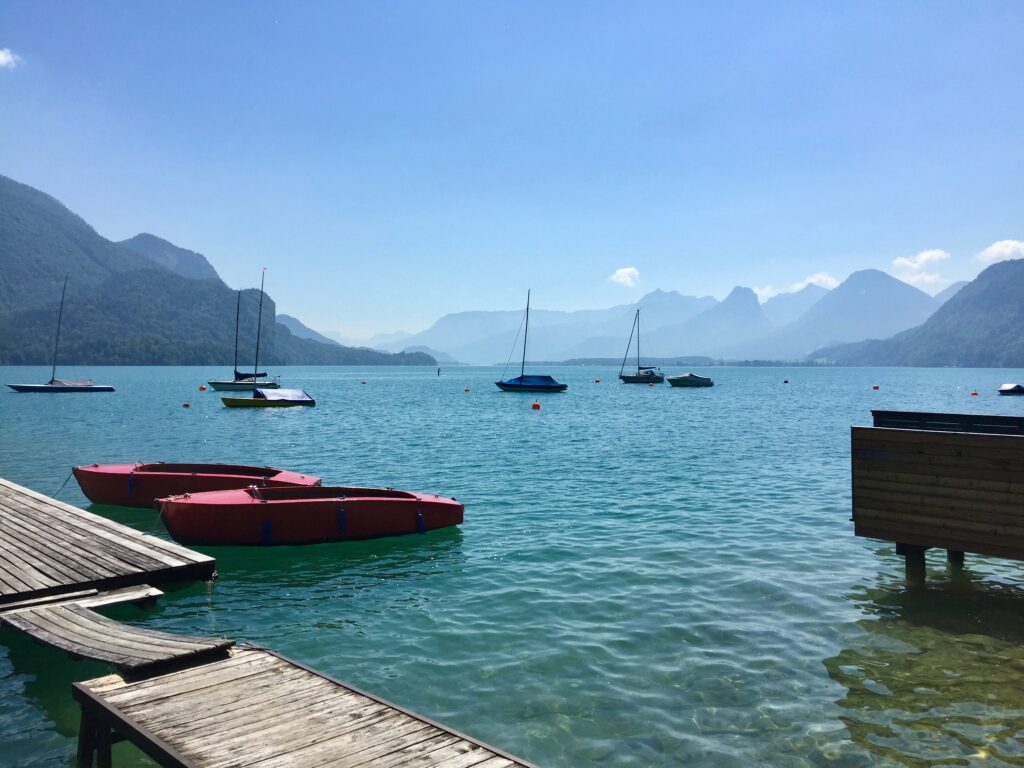
Lake Wallersee Near Salzburg, Austria 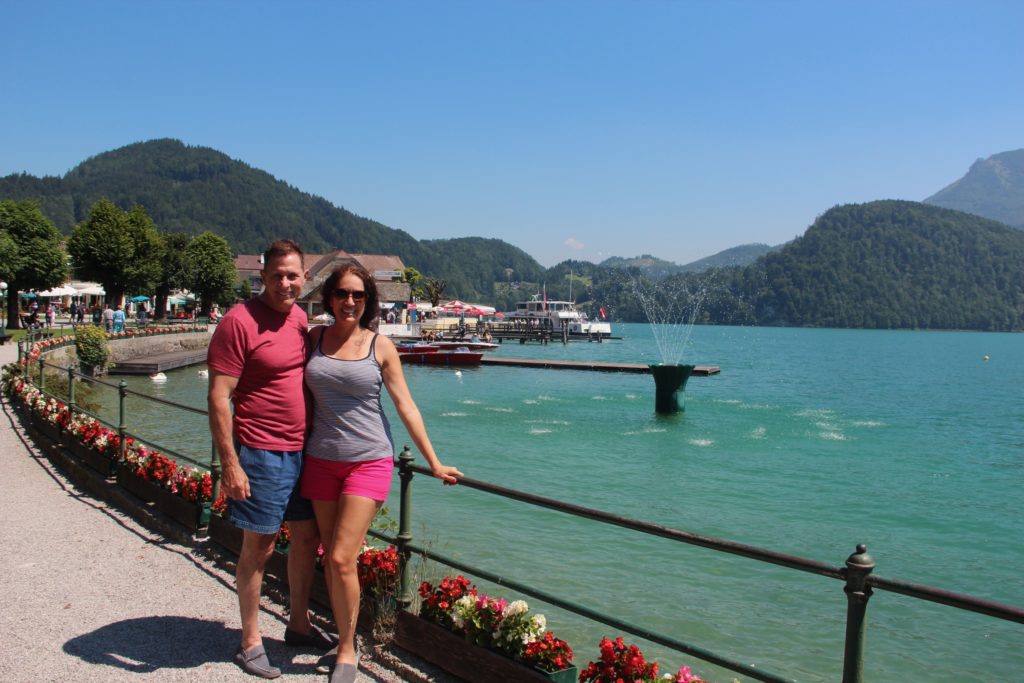
Lake Wallersee 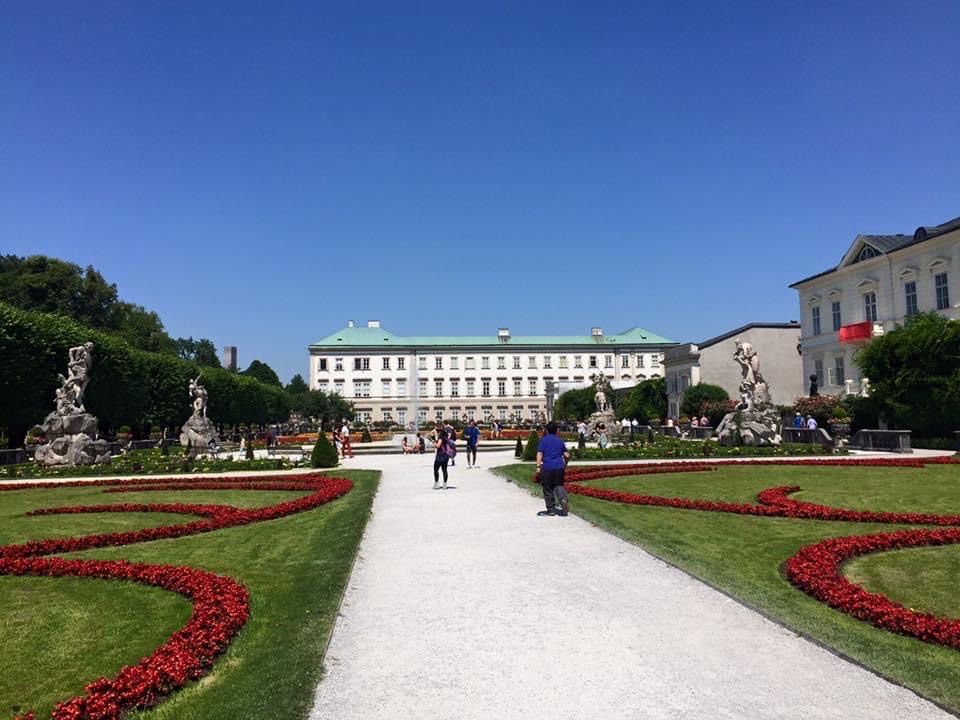
Schloss Leopoldskron Palace Gardens 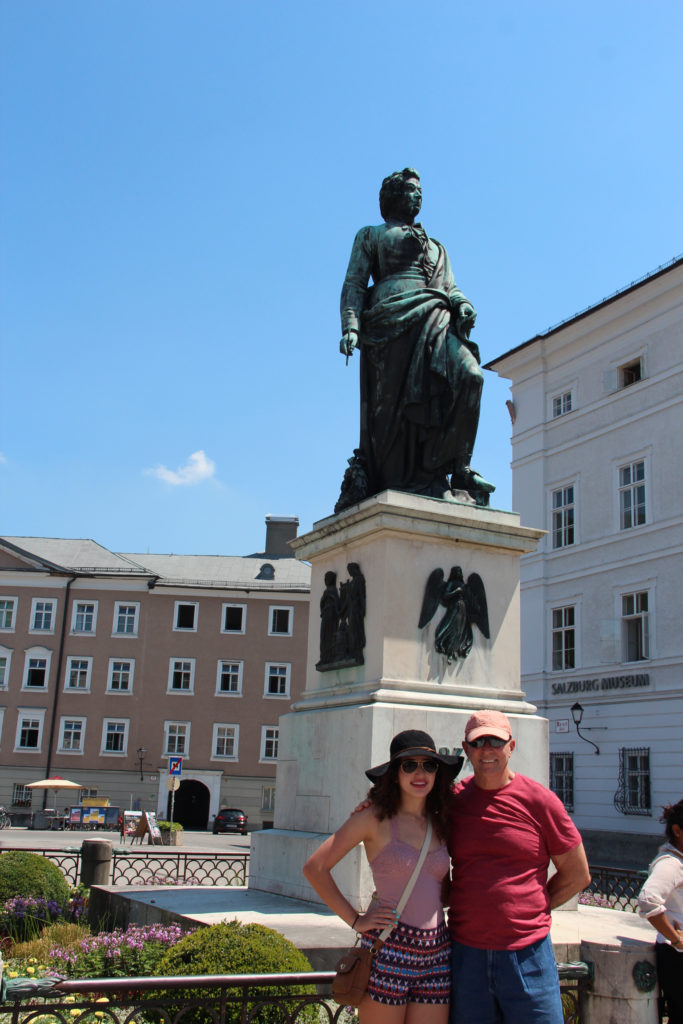
Mozart Monument 
Mozart’s Birthplace in Salzburg 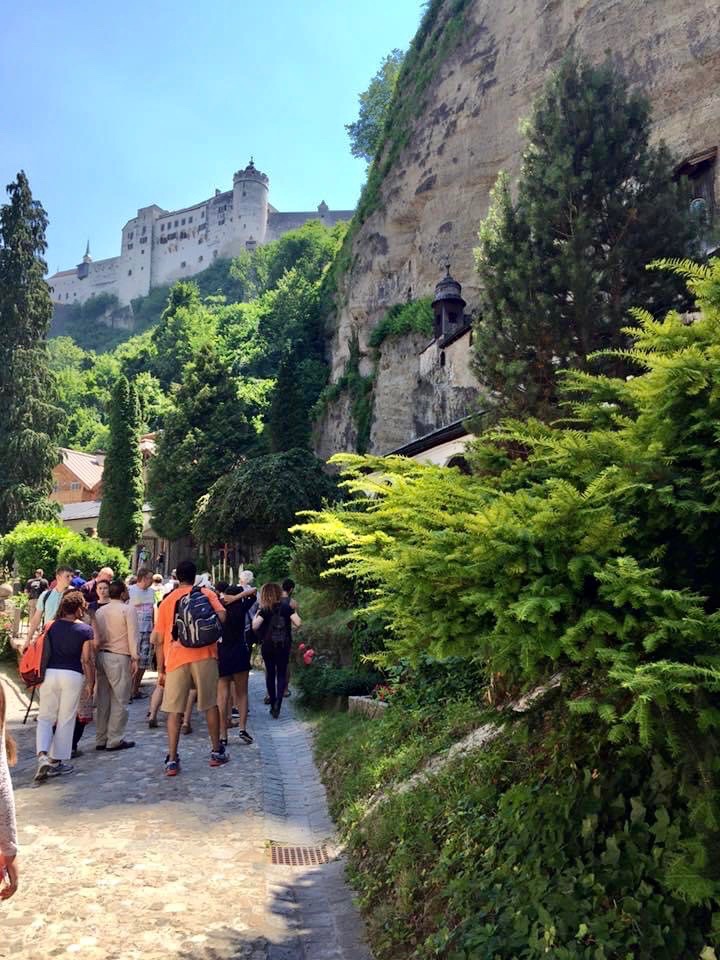
Benedictine Nonnberg Convent Overlooking Salzburg
Several days into our trip to Vienna, we took a day trip to Salzburg, one of the film locations for the musical “The Sound of Music,” and birthplace of Mozart. The city is also a UNESCO World Heritage site. The trip was surreal. I never dreamed one day I’d visit Salzburg. When I first goggled Salzburg, the official tourism site said two types of people visit the city, those who’ve seen “The Sound of Music” and those who haven’t. I love the movie, but regardless if you’ve seen it or not, it’s a beautiful city to visit.
We booked the tour with Viator Tours our preferred tour provider when traveling. It was an amazing road trip. We traveled through Austria’s gorgeous countryside, past alpine scenery and rolling emerald hills, majestic mountain ranges, and curvy mountain roads overlooking gleaming lakes. Salzburg is a picturesque idyllic town. It boasts of some of the most opulent Baroque architecture in all of Austria, which is characterized by grand and elaborate facades. Entering the city, the first view to capture your eye is the monolithic architecture of the Benedictine Nonnberg Convent located on a hill above the city. It’s the worlds oldest Christian women monastery. I marveled at Mozart’s birth home, strolled the convent grounds, and stood next to the cemetery plot where the Trapp family in “The Sound of Music” went into hiding from German soldiers.
Our second day trip was to Budapest, the capital of Hungry. I also booked it using Viator Tours. I’ve wanted to visit Budapest for a long time. I’ve always been intrigued with the stunning photo of the Chain Bridge across the Danube River with the Parliament Building in background. Designers modeled the Parliament Building after London’s Houses of Parliament on the Thames Rover, which is probably the most famous publicized photo of London. So, when we planned to visit Vienna, I jumped at the chance to go to Budapest.
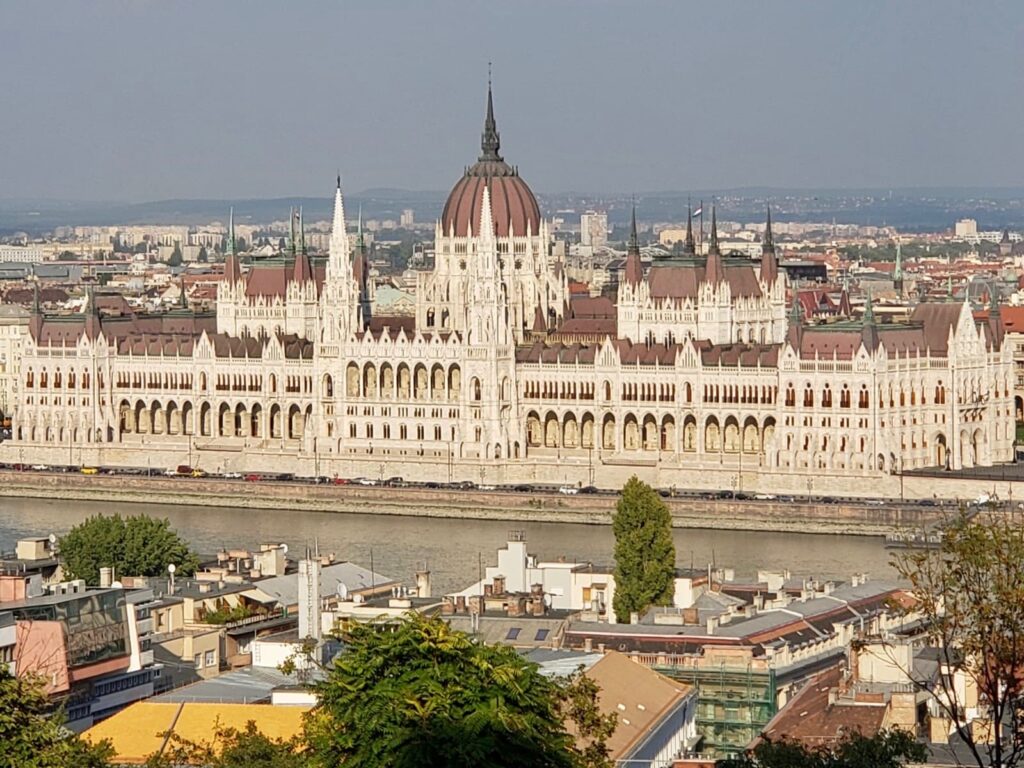
Parliament Building in Budapest, Hungary 
Shoes on the Danube River Bank in Budapest
The trip made for a long day from Vienna but it’s well worth it. Budapest is a magnificent city. It consists of two distinct parts, Buda and Pest, which are situated on opposite sides of the Danube River and connected by a series of bridges. Buda is famous for the historical castle and palace complex, the breathtaking gothic-style Matthias Church, and Fisherman’s Bastion where the medieval castle walls have been turned into a viewing terrace toward the Pest side along the banks of the river. I stood in awe as I looked out toward the Chain Bridge and the impressive gothic-style Hungarian Parliament building. To see this was a dream come true. The views from the terrace make Buda one of the most visited attractions in the city.

Matthias Church 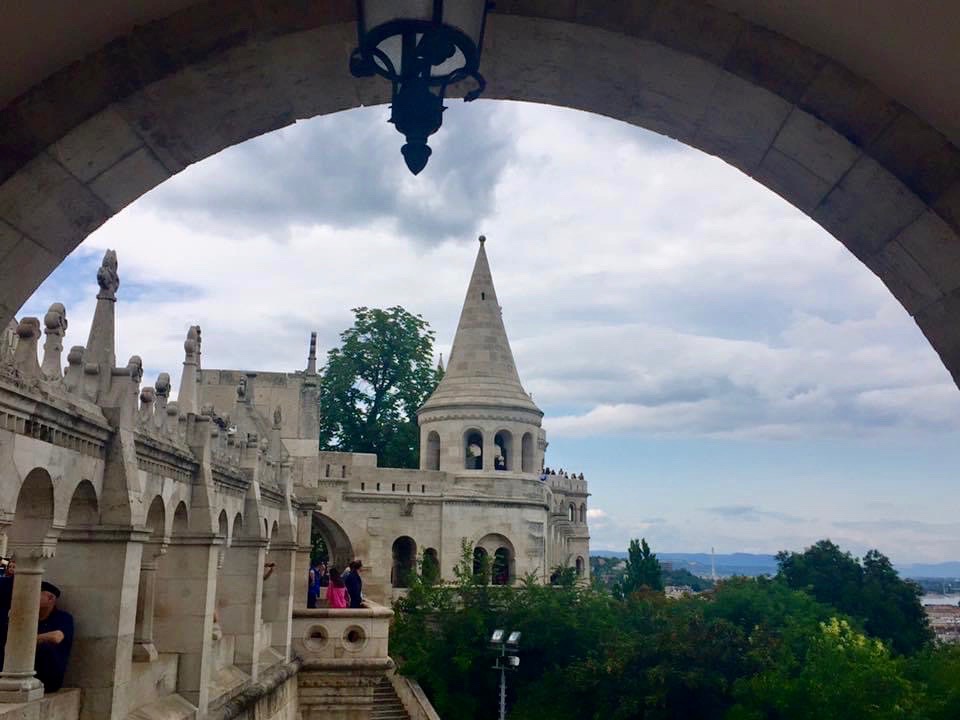
Budapest’s Castle Hill 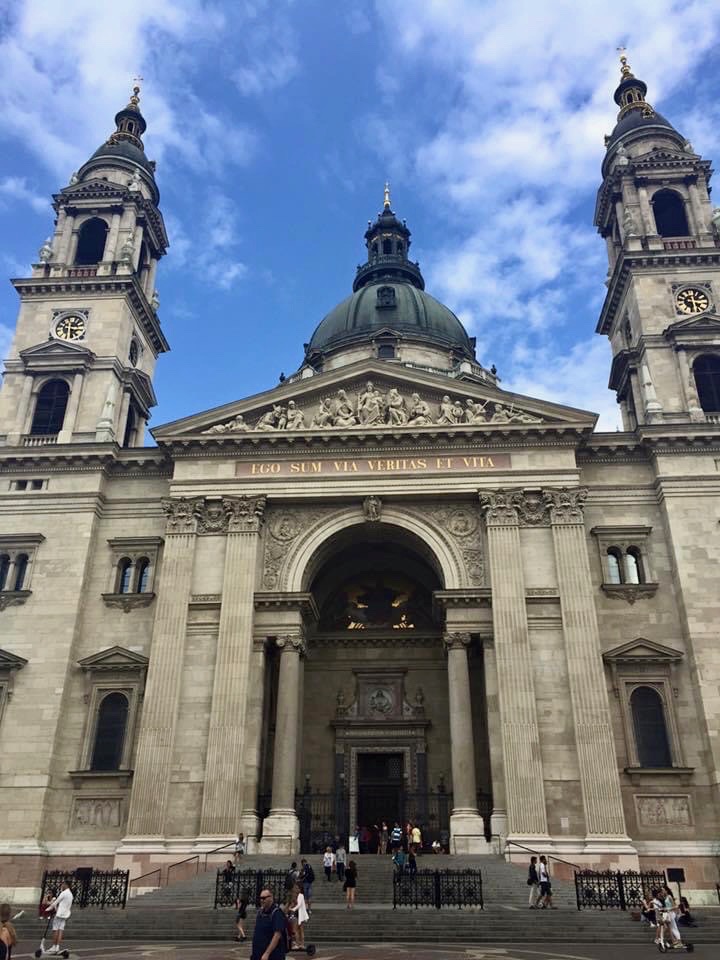
St. Stephen’s Basilica
Unlike Buda, which has a more residential feel and is considered to be the calmer side of the city there is more going on in Pest. It’s home to some of Budapest’s most famous attractions, including St. Stephen’s Basilica, the Parliament Building, Hero’s Square, the opera house, former Soviet Union monuments, and plenty of fine restaurants and shopping. The one attraction that is must see is the memorial “Shoes on the Danube Bank” on the waterfront in front of the Parliament Building. It honors Jewish men, women and children who were executed by Nazi and fascist sympathizers during World War II. It’s a simple but immensely powerful display consisting of scores of bronze shoes in disarray symbolizing where victims removed their shoes and then shot at the edge of Danube River so that their bodies would be carried away by the currents. It brought tears to my eyes as I walked among the shoes.
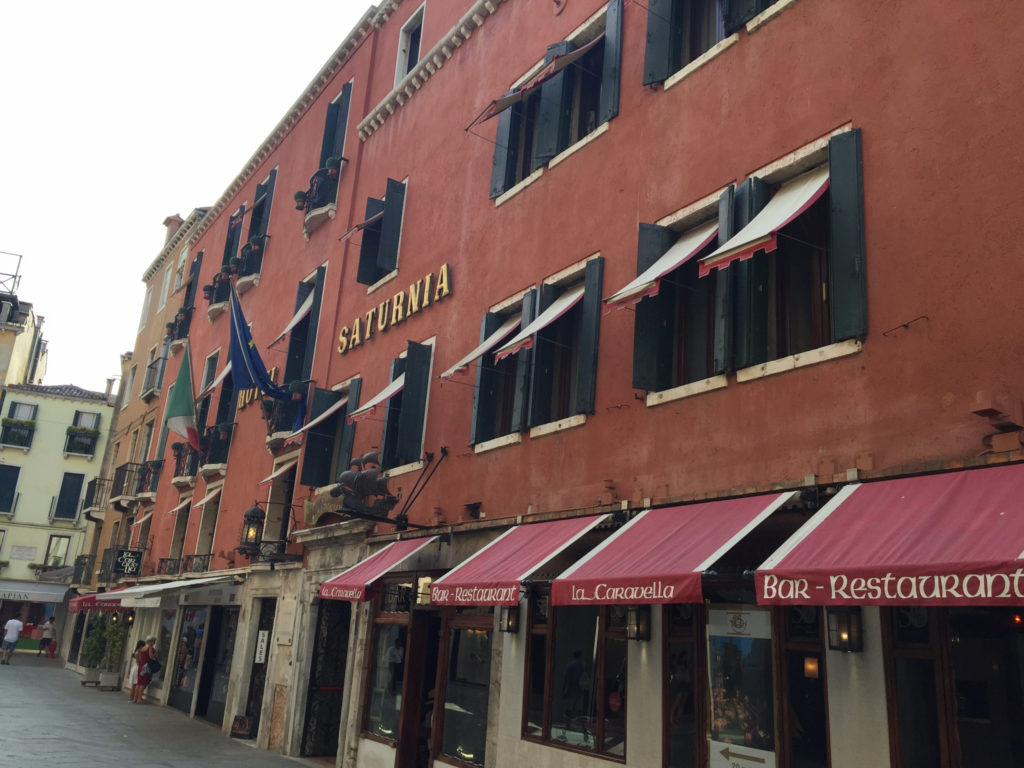
Hotel Saturnia in Venice
The next leg of our vacation took us on a 10-day trip from Vienna to Venice, then to Rovinj, Croatia and back to Vienna. Rather than taking a train from Vienna to Venice and back, we booked a private van and driver who doubled as a guide. The drive took us through the amazing countryside of Austria and Italy, including picture-perfect towns, the beautiful Italian Alps, and emerald lakes. The cost was worth it. My family and I had plenty of time to stretch-out and relax along the way.
After being dropped off at Piazzale Roma at the entrance to Venice, we boarded a water taxi to Hotel Saturnia, where we stayed. It is one of the top historic hotels in Venice and is ideally located only minutes from San Marco Square, fine restaurants, shopping and duty-free exchange stores, and water transportation. The hotel offers ageless beauty, a touch of romanticism, noteworthy amenities, excellent staff, large rooms and baths, relaxing bar area and outstanding breakfast buffet. I loved our stay there.
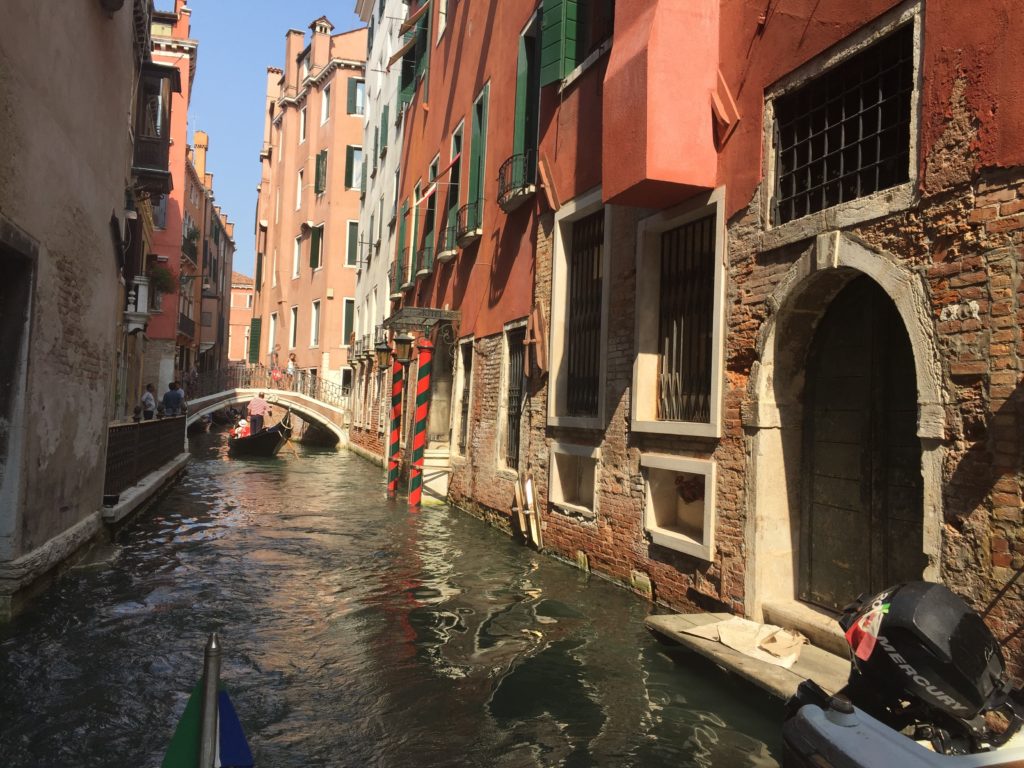
Water Taxi Drop-Off and Pick-Up at Hotel 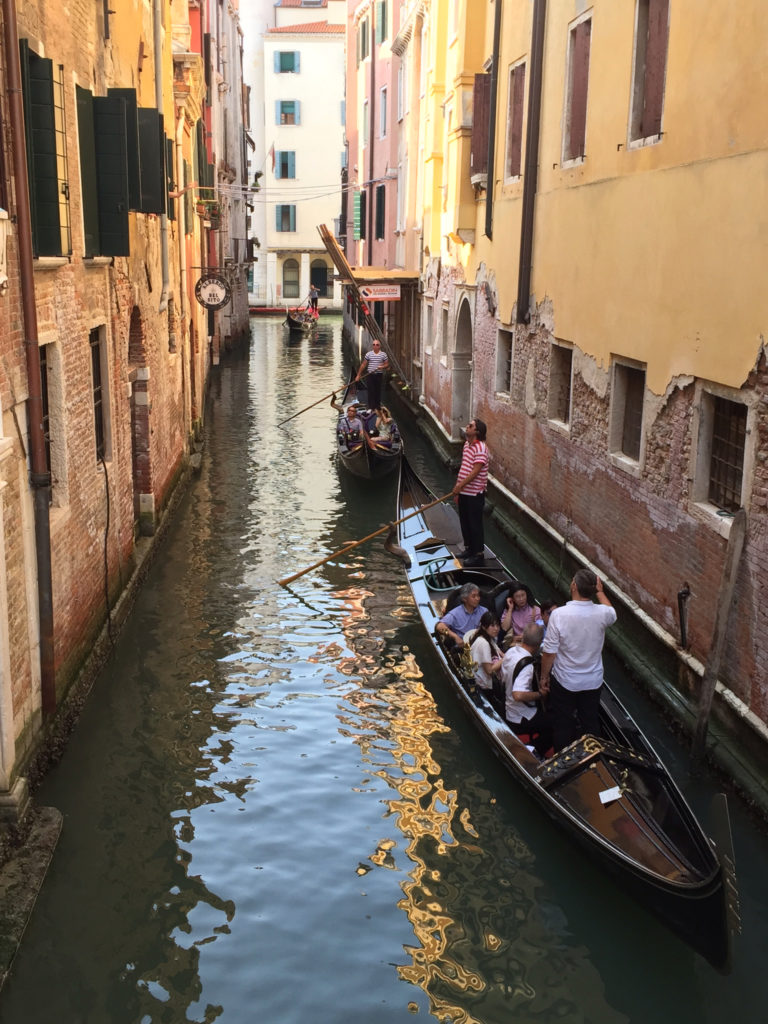
Canal Near Hotel 
Breakfast in Courtyard of Hotel
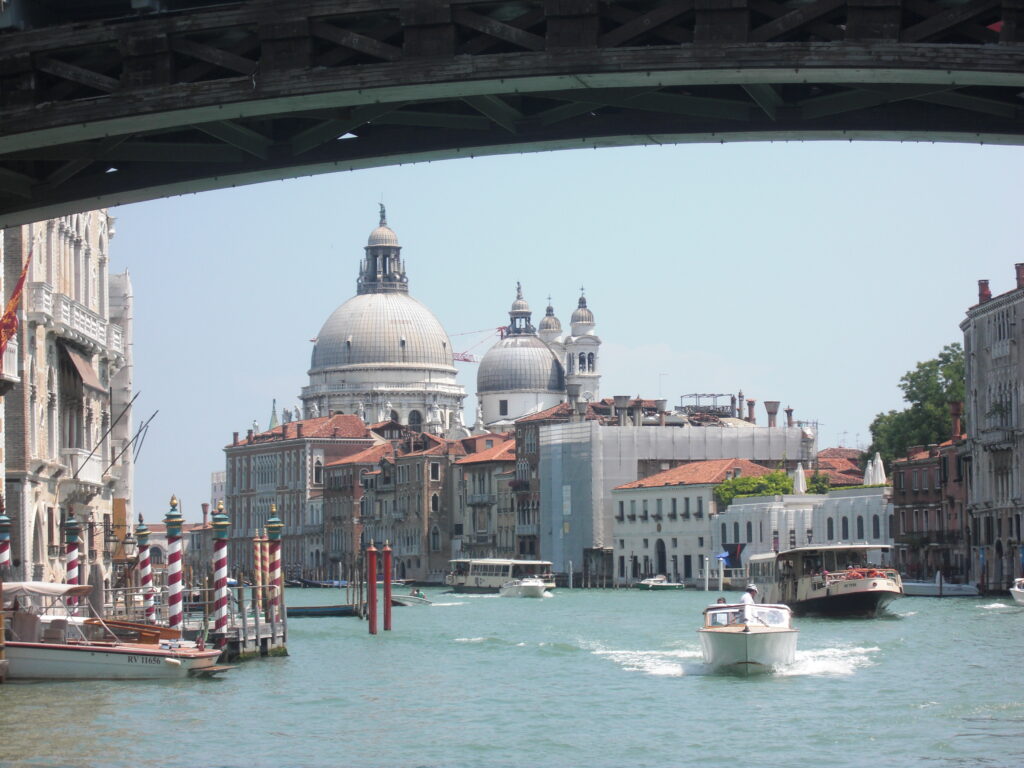
Basilica on Grand Canal 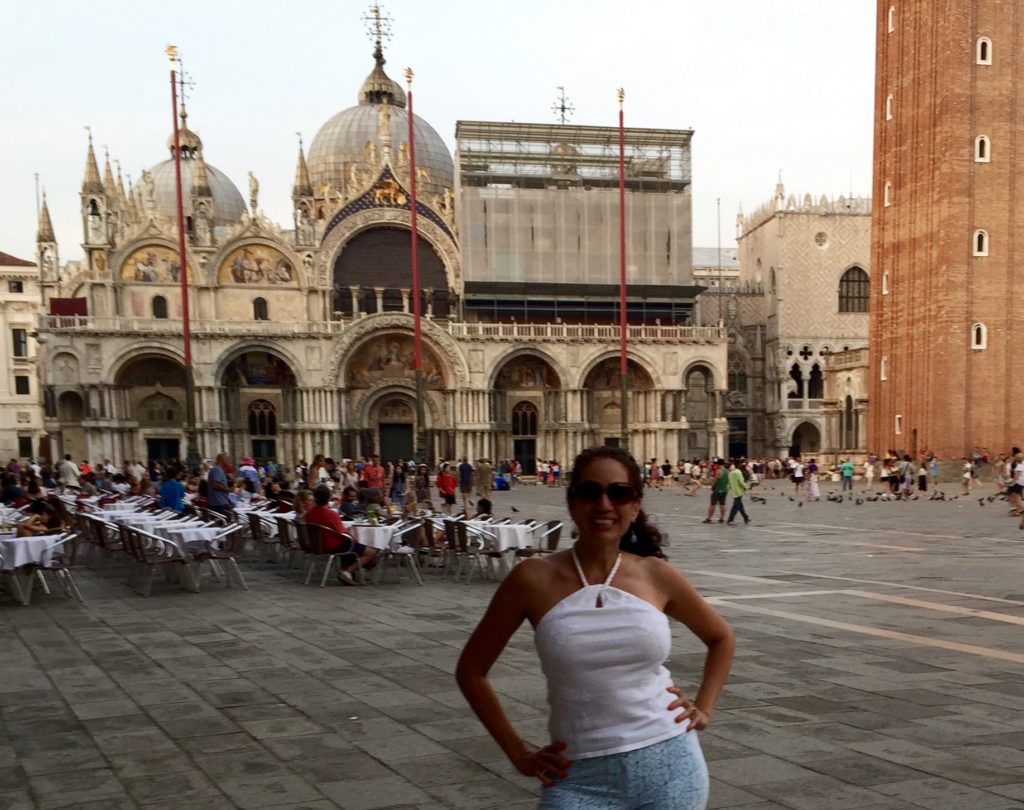
St. Mark’s Square 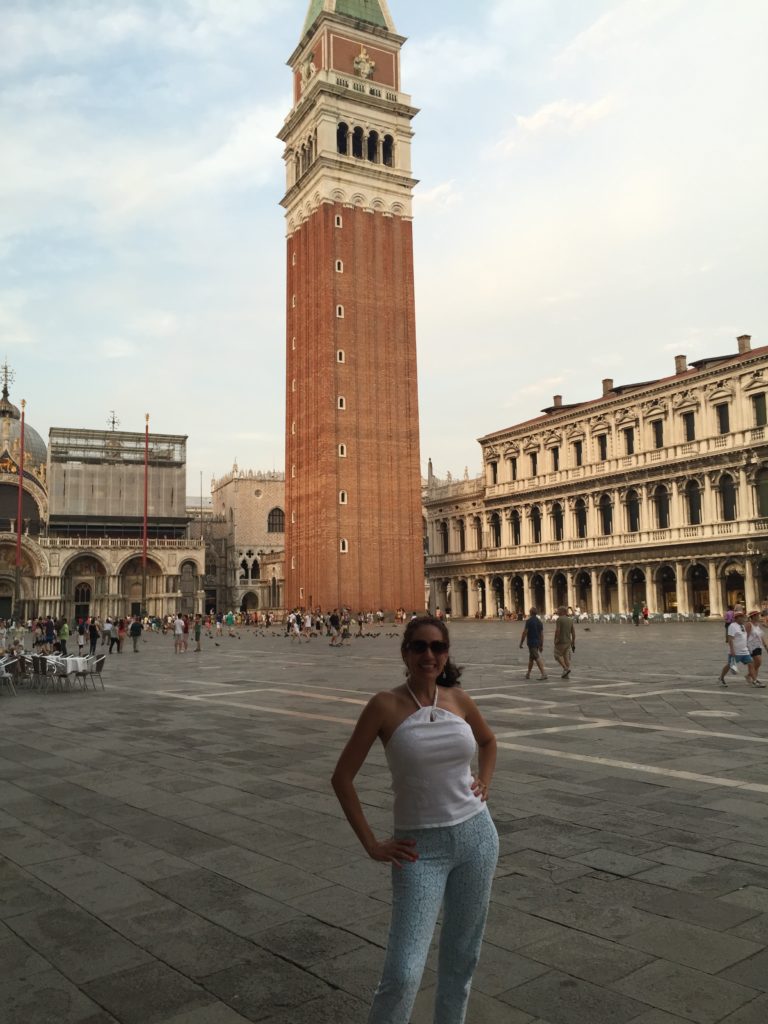
St. Mark’s Square in Venice 
Home on Grand Canal 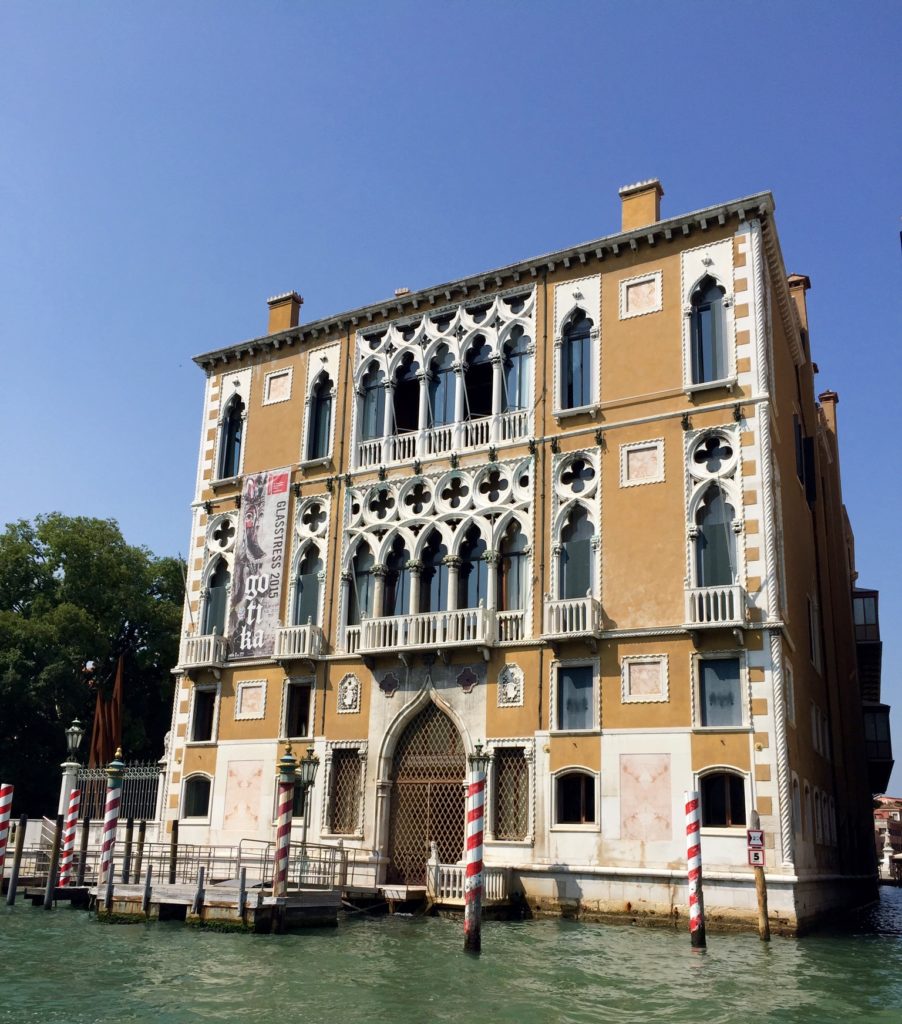
Institute of Science, Arts and Letters 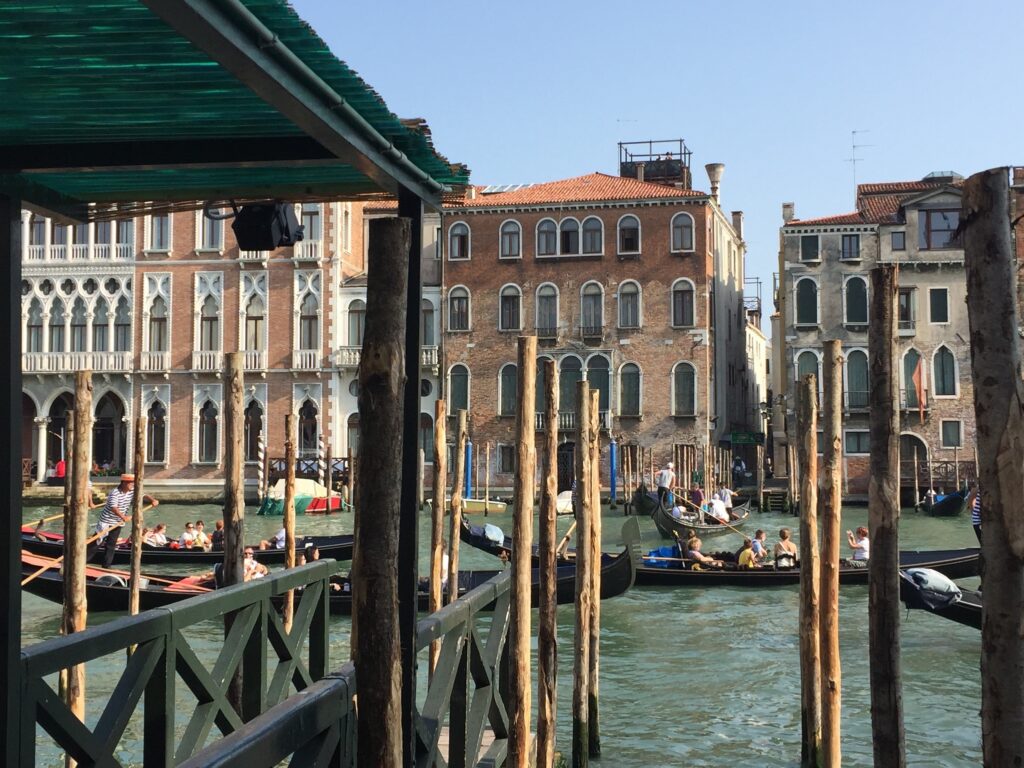
Gondolas on Grand Canal 
Canal Near Hotel 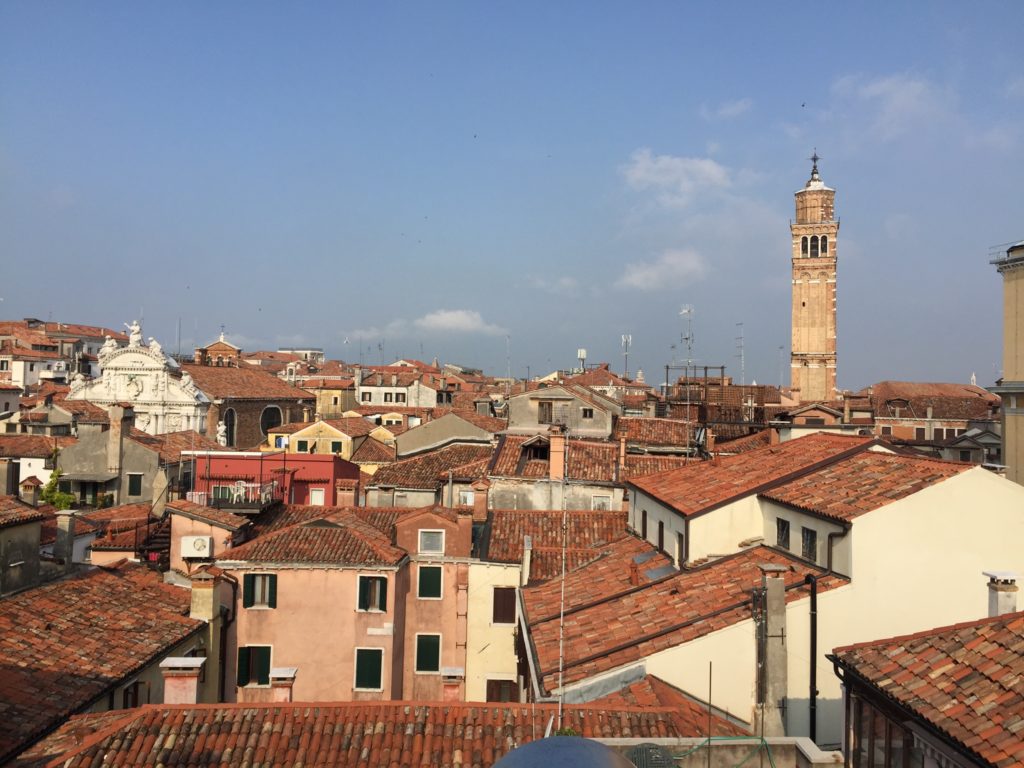
Rooftop View from Hotel 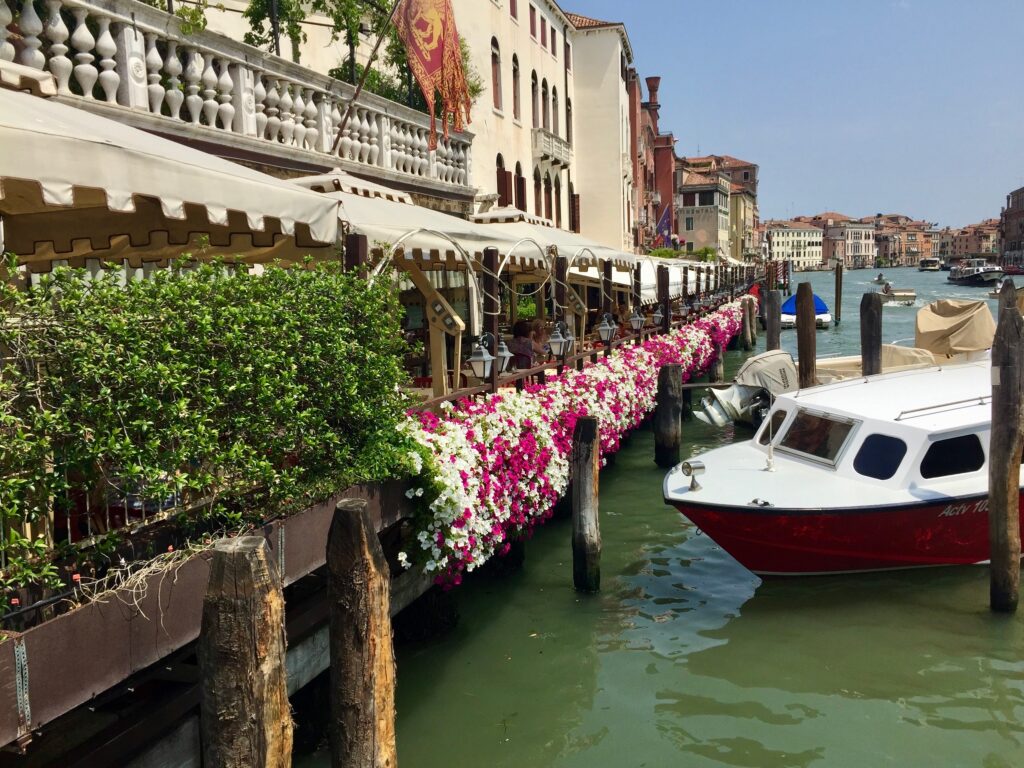
Water Taxi Pier-Side of Restaurant
Venice is considered to be one of the most beautiful cities in the world. Over 50 million tourists visited the city in 2015. This was my second visit to Venice. This time, however, we had more time to enjoy Venice. We practically lived at St. Mark’s Square and the Basilica, which are the city’s top tourist attractions. There’s always plenty to do and see there. Other fun attractions worth visiting include the Rialto Bridge, a serenade gondola ride along the back canals and the Grand Canal, the Bridge of Signs, and of course, my favorite – the Louis Vuitton store.
Next, we took the high-speed ferry across the Adriatic Sea from Vienna to Rovinj. It’s a uniquely charming city with rich scenery, bountiful natural beauty and stunning picturesque views. The view from our hotel balcony overlooking the historic Old Town and St. Euphemia Basilica, and array of restored buildings painted in bright pastel colors against a grand harbor shimmering in the intoxicating blue waters, is stunning. It’s post-card perfect.
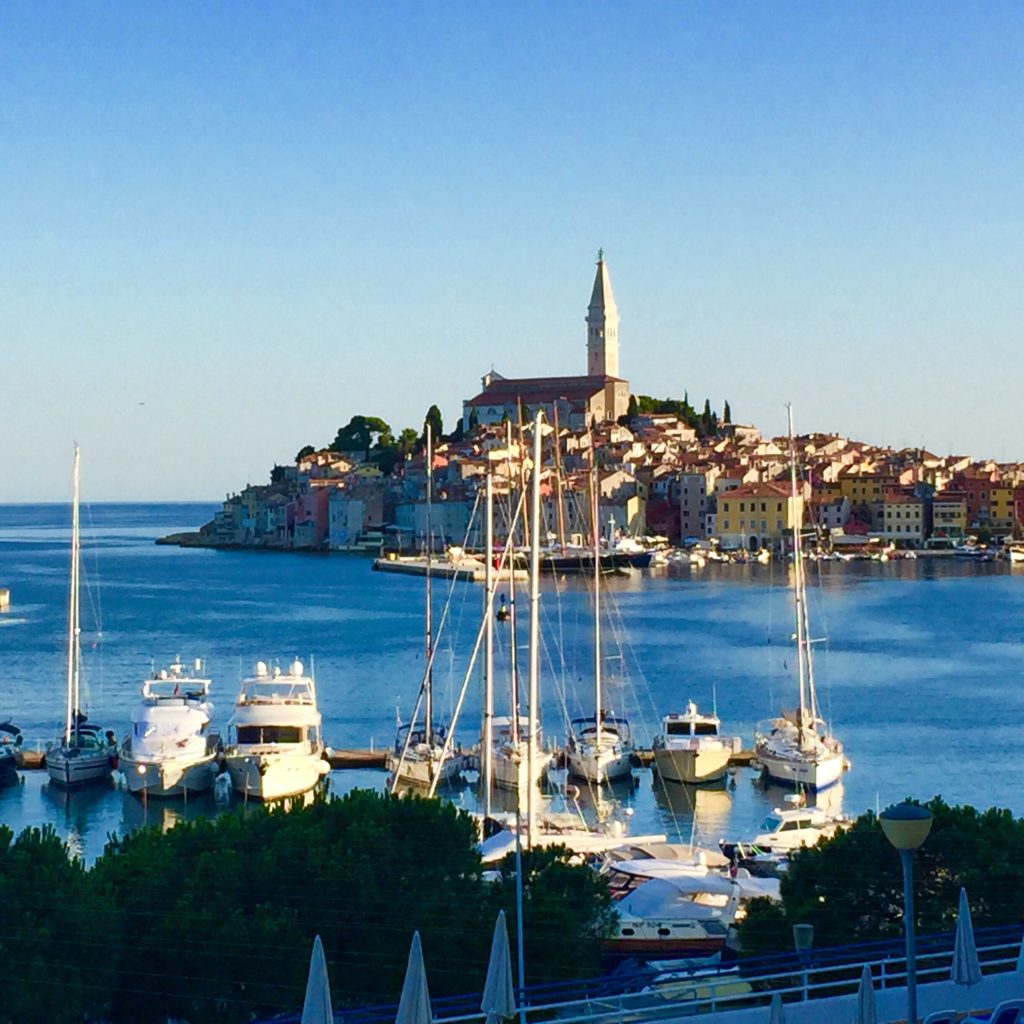
Rovinj, Croaitia 
Shirley in Adriatic Sea in Rovinj 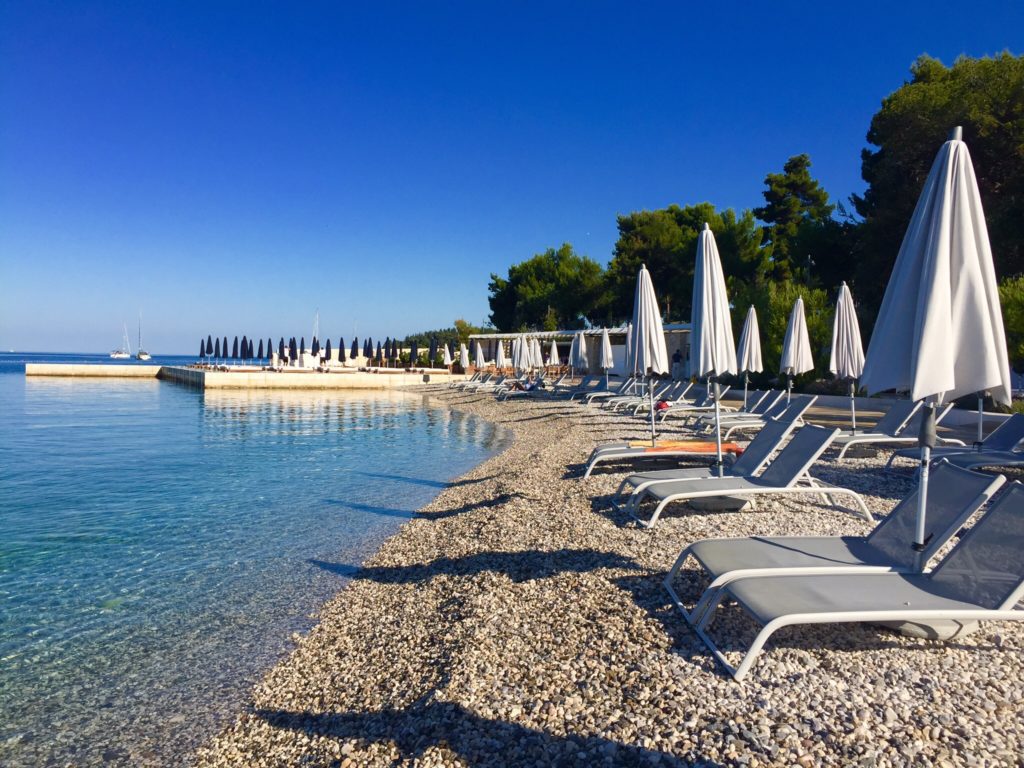
Mulini Beach Along Adriatic Sea in Rovinj
We stayed at the Park Hotel. It is part of the Maistra hotel chain that offers 5-star accommodations along the harbor and nearby beaches. During our stay it was announced the Park Hotel would be razed to build the Grand Park Hotel (which today is one of the Leading Hotels of the World). The old Park Hotel was situated on most desirable location overlooking the harbor and Old Town. The other hotels occupy beachfront property. We visited the other hotels frequently whenever we wanted to enjoy the beaches and fabulous outside bars. At one of the bars we met family owners of the Maistra hotel chain. They befriended us and treated us very special every time we visited. On my birthday, they generously treated us to free bottles of Prosecco.
We also immersed ourselves in the local culture and history. Old Town is about a 10- minute walk from the hotel. The walkability around the city and Old Town is very appealing. We visited Old Town many times. Several times we rented bikes to explore the area. Cars are not allowed in the city. You can walk Old Town, St. Euphemia Basilica, the colorful boutiques, sidewalk wine cafés, restaurants and ice cream shops, without any concern for traffic. One day, when riding bikes and wearing our bathing suits under our clothes, we stopped to swim in the waters off the rocky shore whenever we saw locals doing it and it appeared safe.
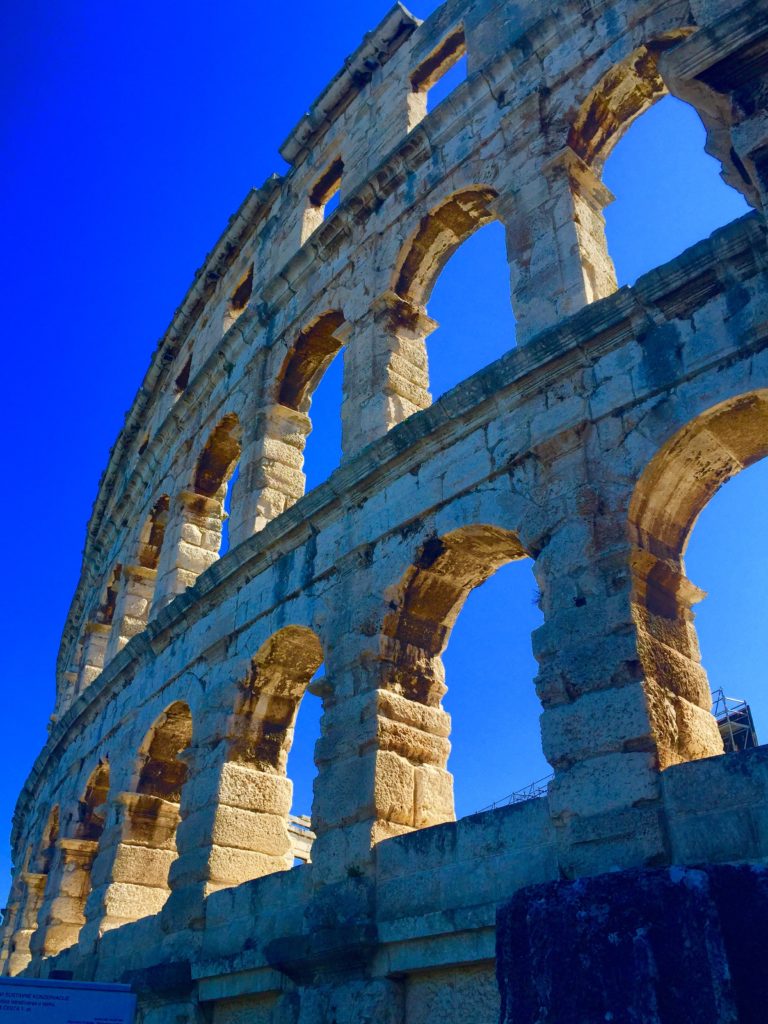
Roman Ruins in Pula, Croatia 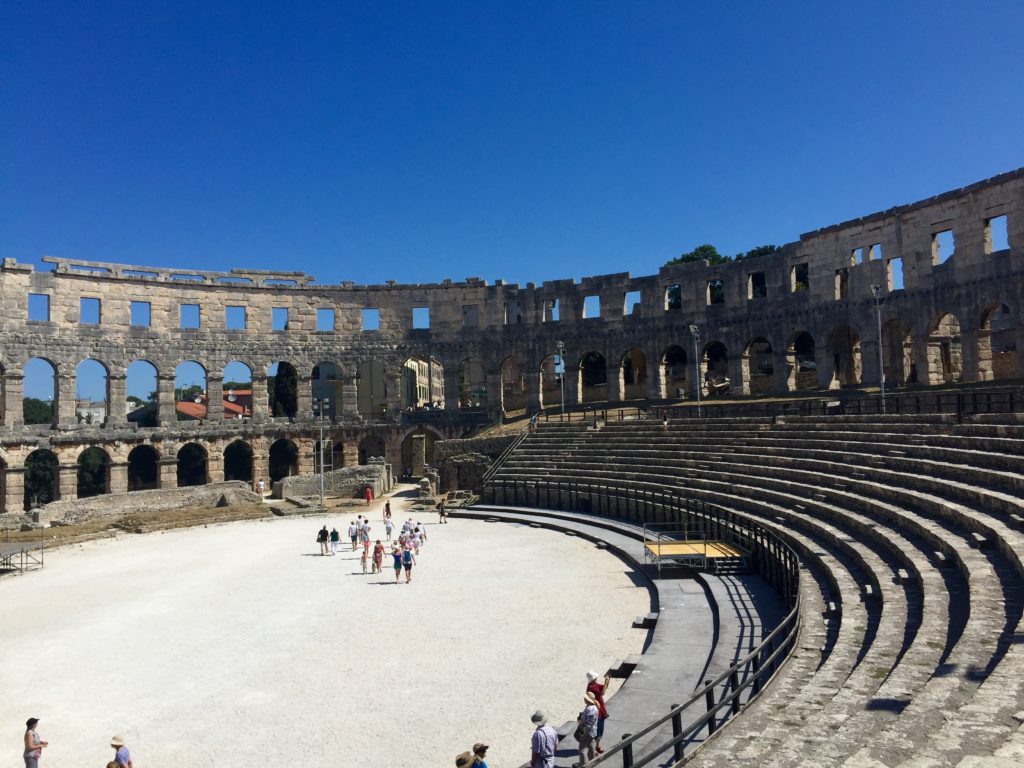
Roman Ruins in Pula, Croatia
We also enjoyed a 1-day excursion to the city of Pula, which is best known for its many surviving ancient Roman buildings and ruins. The most famous is the amphitheater. It’s among the six largest surviving Roman arenas in the world. It’s known locally as the Arena. The largest is the Colosseum in Rome. Other ruins in Pula worth seeing are the Small Roman Theatre, Porta Germina (twin gates), and The Arch of the Sergii. Sadly, as I walked through the streets near former Yugoslavian communist-era housing projects, I saw many damaged statues, and broken sections of pillars in ditches along the side of the road. I do not know if these were in fact Roman ruins, but they appeared to me to be “historic artifacts.” I often wondered why these items had not been recovered and stored in a warehouse for restoration and future display.
Each destination we visited was special. If pressed, I’d have to say Rovinj is probably the highlight of our trip. It’s a “traveler’s jackpot” and the prices are very reasonable. If you ever have the opportunity to visit Croatia, Rovinj is one place you should visit.

